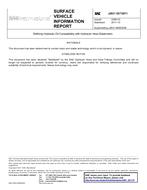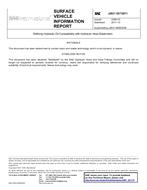This SAE Information Report is intended to provide the hydraulic oil manufacturer and hydraulic equipment manufacturer with information that can be used predicting the relative impact that non petroleum based hydraulic oils may have on the hose elastomers in the existing system. This document contains the information necessary to perform the tests using standard elastomer formulations, representative of material used in hydraulic hose. The test methods used are defined within ASTM D471, standard test method for Rubber Property—Effect of Liquids. The physical properties measured, are volume swell, tensile strength, percent elongation, shore A hardness and load at 100% elongation. The properties were measured, after immersion, at 72 hours, 168 hours, 336 hours, 504 hours, 672 hours, 840 hours, and 1008 hours and the percent calculated as change from the unaged properties. The detail of the testing process is described in the following report.
Product Details
- Published:
- 10/01/2011
- File Size:
- 1 file , 530 KB

